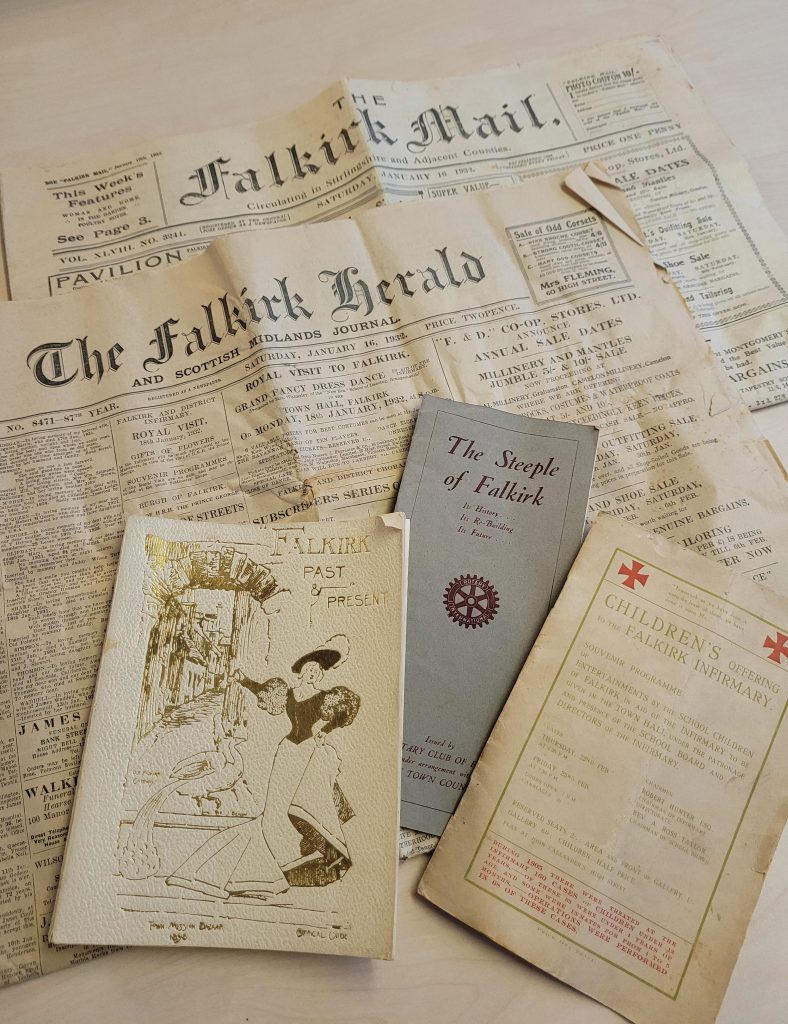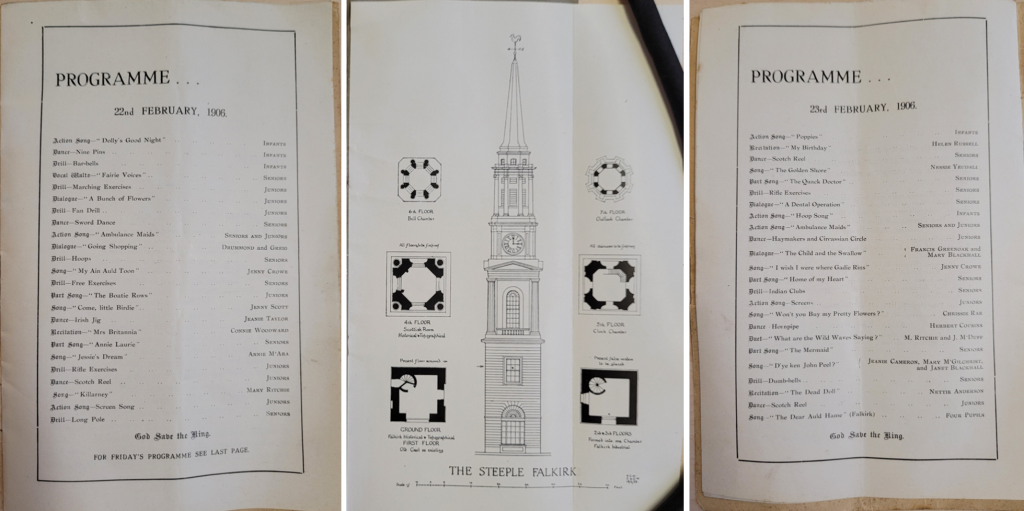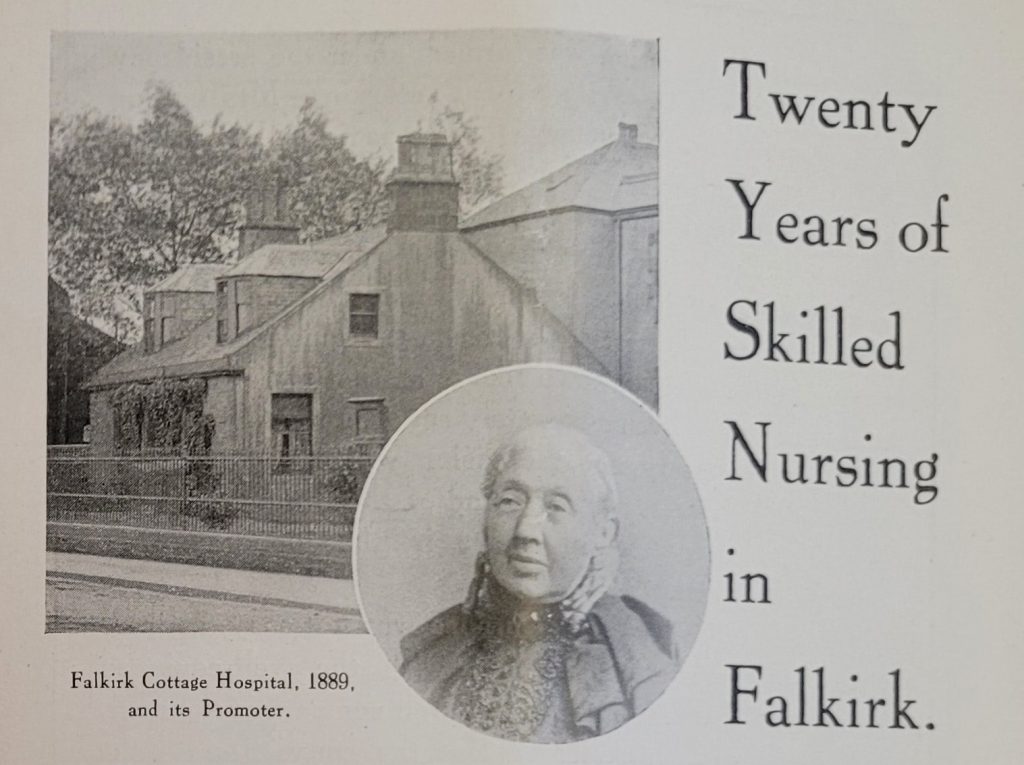The University is getting ready to inter a new time capsule upon the completion of the Campus Central building project following the discovery of a time capsule from 1969 that was dug up by the Gannochy Sports Pavilion at the start of the building works in late 2018.
We’re asking you, University of Stirling staff, students and alumni, to nominate items that you think should be placed into this new time capsule (be quick about it, nominations close on Friday 12th November! Suggest an item to us here) so that we can all be part of telling the story of the University. But what to choose? An item relating to the University itself? Something that reflects the current time period we live in? Something related to the pandemic which still surrounds us? Why not take inspiration from another time capsule that we hold in the University Archives – one which was buried in the then new Falkirk & District Royal Infirmary building in 1932.
Falkirk & District Royal Infirmary began its existence in 1889 as a cottage hospital – Falkirk Cottage Hospital or Salton Cottage Hospital after the name of the original cottage. Though the cottage was altered and expanded in 1889 and again in 1900, by the end of the First World War the hospital had become so successful and well used that thoughts turned to a more considerable expansion. As the area surrounding the Cottage Hospital was insufficient for any serious building plans, a new hospital on a new site was begun with the first sod being cut by the Duchess of Montrose in 1926. The finished building was opened by Prince George on 18th January 1930 and a time capsule was buried to mark the occasion. During building works in 2011, the capsule was dug up and now sits in the NHS Forth Valley Archive at the University of Stirling.
But what was inside the capsule?

Much like the University’s time capsule, there was a selection of current coinage tucked away in a small leather coin purse. The coins are as follows: three penny, florin or two shilling, half penny, one penny, half crown, shilling, farthing and sixpence. Of those, only the one penny piece would still be familiar to us these days. Whether they suspected how much of their coinage would become obsolete in the next 80 years is hard to say but it’s wonderful to have examples of money from the 1930s.

Next we have some newspapers, again, in keeping with the capsule buried at the University in 1969. They help to tie the focus of the capsule to the specific day it was buried – what exactly was going on in the world? What kinds of things were being advertised? What newspapers were even in existence? What did they cost? In both capsules there are two newspapers, perhaps for balance and a variety of viewpoints.
Many of the other items in this time capsule commemorate Falkirk itself and its community.
A booklet on ‘The Steeple of Falkirk’ beautifully illustrates a town landmark the community was proud of.
‘Falkirk Past and Present’ gives something of the history of Falkirk – with photographs of the wash house, fishmonger and Mr McKinnie’s biscuit and confectionary manufacturer to name but a few – and incorporates the ‘Official Guide to the Town Mission Bazaar’ which was held from the 29th September-1st October 1898 – the last time funds were being raised for the hospital – and describes everything from the food eaten to the entertainment provided and the layout of the bazaar itself.
The booklet ‘Children’s Offering to the Falkirk Infirmary’ details part of the fundraising drive for the new hospital, an evening of entertainment given by school children at the Town Hall on Thursday 22nd and Friday 23rd February in perhaps 1926. Elsewhere in the NHS Forth Valley Archive we hold some amazing posters from the 1920s which evidence the various efforts of the local community in raising funds for the new hospital but the posters don’t evidence this wonderful event put on by schoolchildren so it’s fantastic to have this booklet survive in the capsule. The booklet also gives a history of nursing in Falkirk which details a period of medical history we would know little about otherwise.
Some typed historical notes give an account of the beginnings of the Falkirk & District Royal Infirmary as a Cottage Hospital in the late 1880s and a separate sheet details the official services provided by Prince George on the day of opening in 1932. And that’s it! A time capsule full of local history and the path to the new building. Is there anything tantalisingly out of reach? What do you wish you could know about that auspicious day in January 1932 or the history of the hospital that had gone before?



